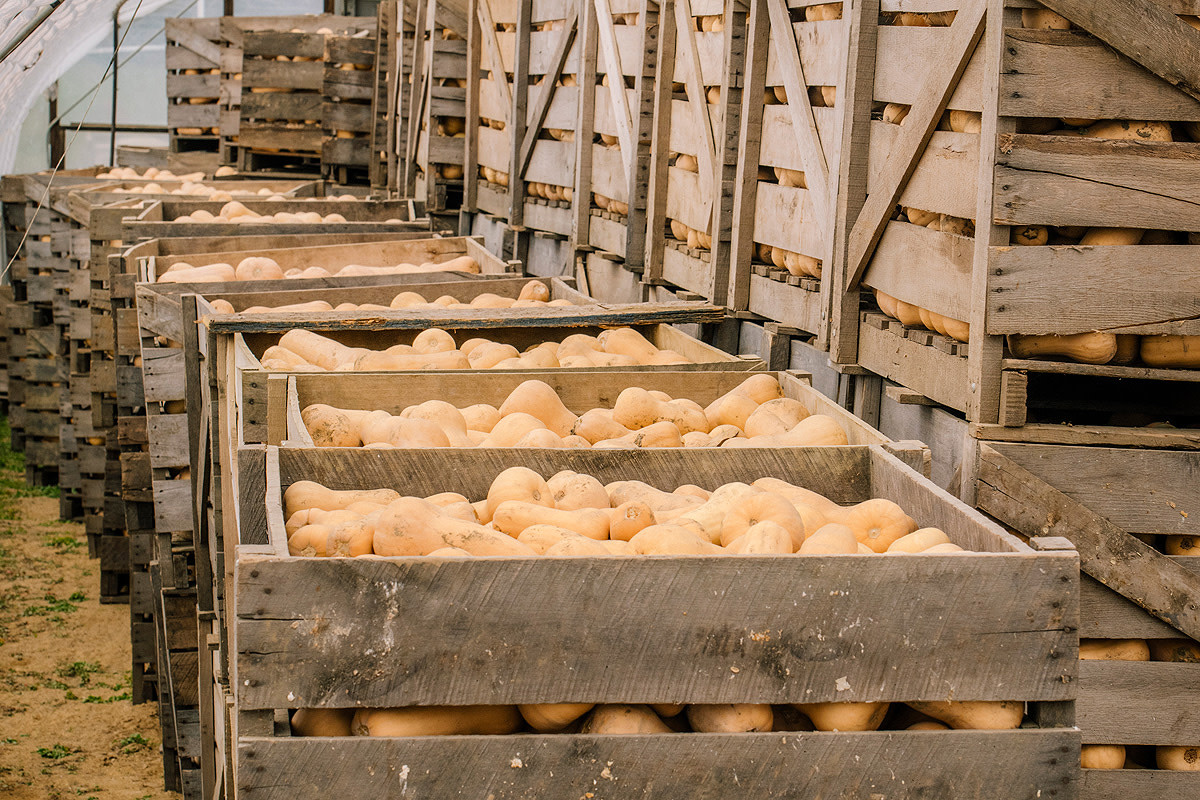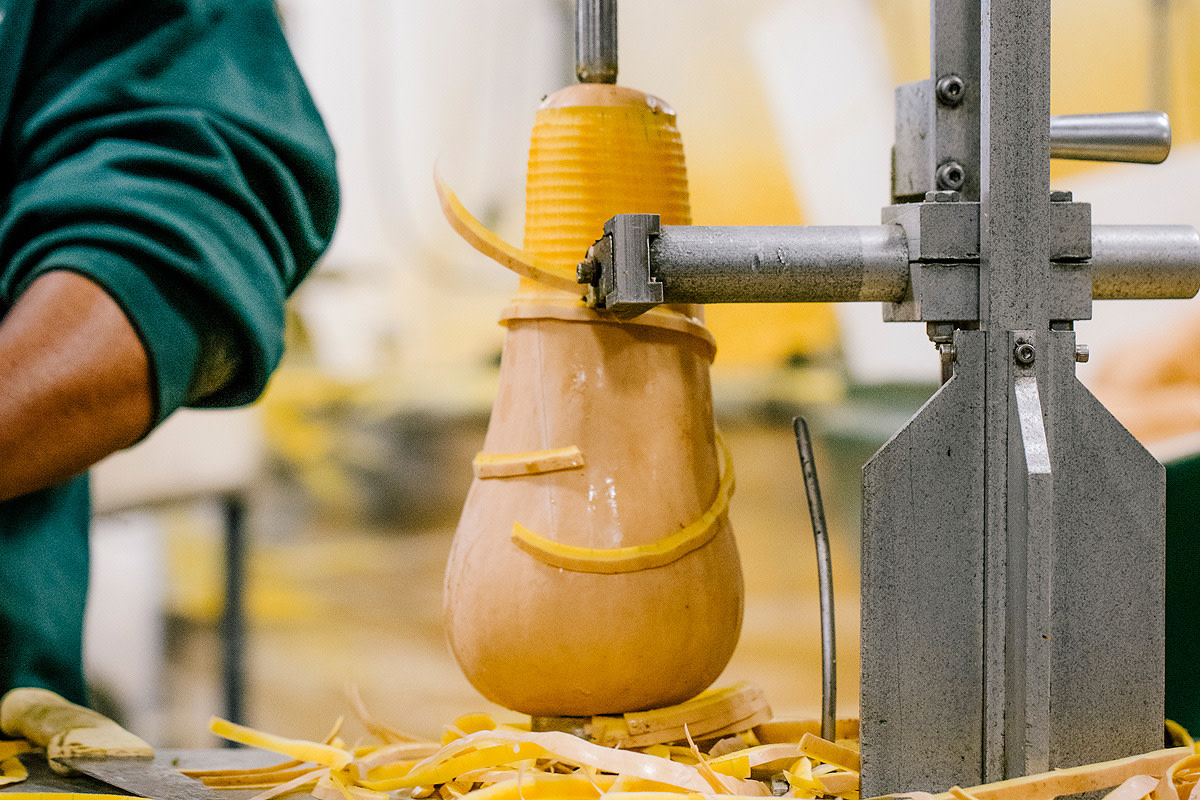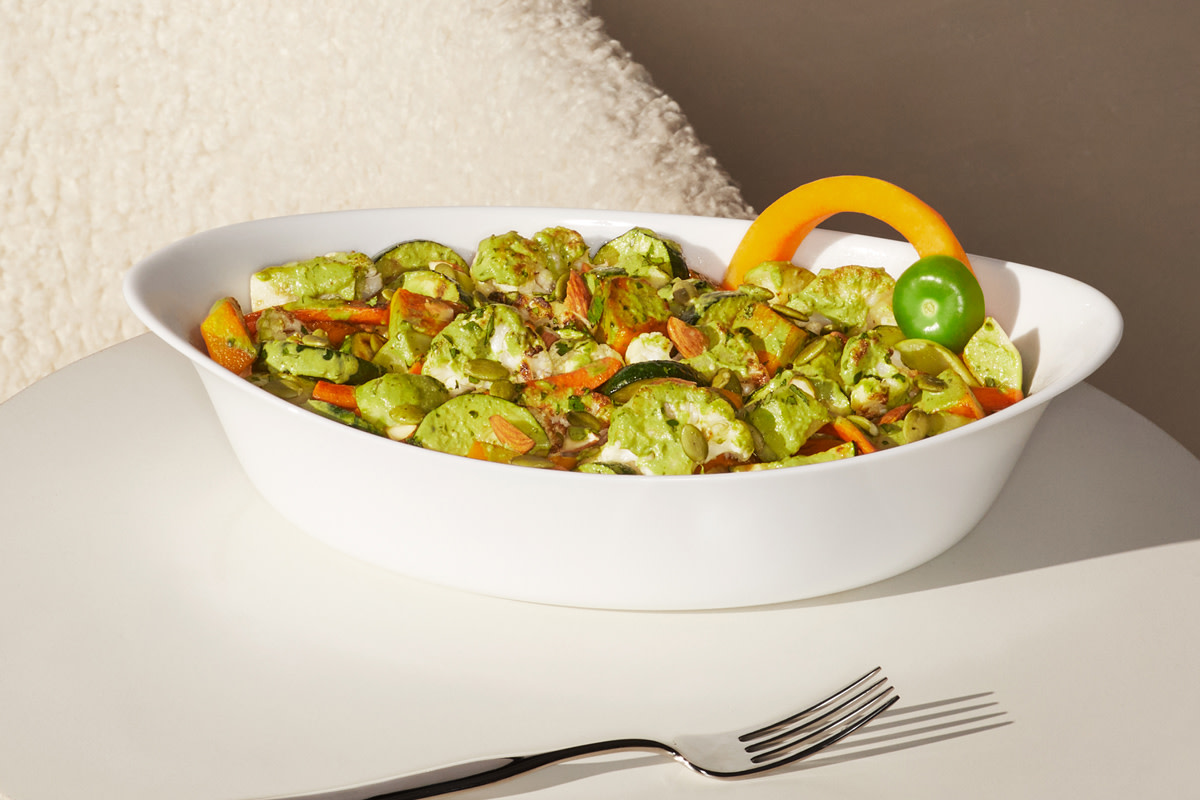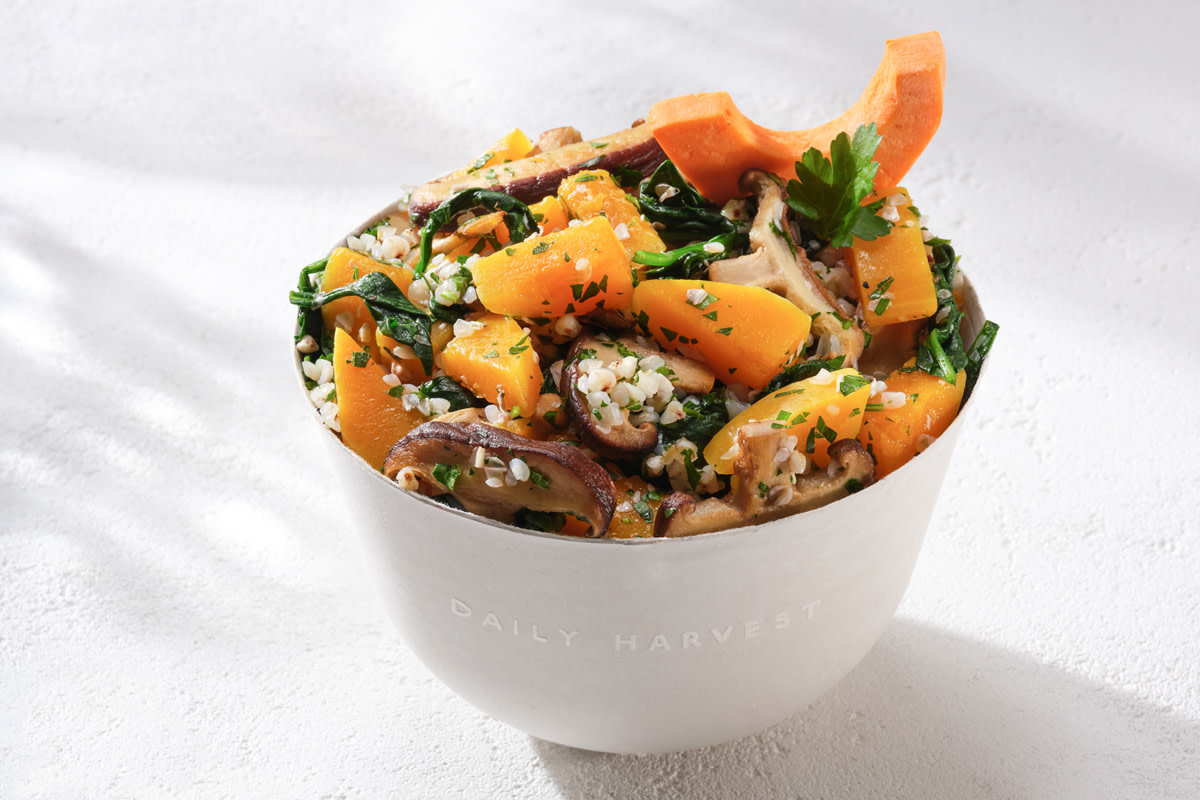
Butternut Squash: How to Cook It, Eat It, and More
- By Carolina Schneider, MS RD
- Updated: January 2025

You know it’s officially sweater weather when butternut squash is in heavy rotation. Here’s everything you need to know about our fave winter squash varietal. Read on to learn how they’re grown, why they’re good for us, and how to cook butternut squash (you can thank us later).

It’s no wonder butternut squash is a cold-weather staple. Its smooth, tough, cream-colored skin protects the bright orange flesh beneath its peel. Butternut squashes are usually pear-shaped and vary in size. They’re close cousins to acorn squash, kabocha squash, pumpkin, and spaghetti squash.
Like other winter squashes, the seed-to-squash process takes about four months. Butternut squash seeds need warm soil to thrive and are planted in the late spring. Squashes are ripe and ready for harvest in early fall.
You may be wondering why they’re called “winter squashes” if they actually grow in the summer? The name “winter squash” has to do with their extended storage life. Unlike summer squash — with its thin, tender skin — winter squashes are known for their thick, protective exteriors. After harvest in the fall, winter squash can hang in the pantry for months (well into the winter) without going bad. Which means: you can enjoy fresh winter squash all winter long.
Butternut squash is deeply nourishing. One serving of cooked butternut squash (about ⅔ cup) packs about 4 grams of fiber (the digestion-supporting nutrient). For context, the daily value for fiber is 28 grams, so one serving gets you well on your way.
Butternut squash is rich in vitamin C, an antioxidant nutrient that helps fight free radicals, supports the immune system, and strengthens your skin. A serving of butternut squash also provides a smaller amount of magnesium (needed for energy metabolism) and potassium (an important blood pressure regulator). Hot take: research shows these minerals are higher in organic squashes.
Butternut squash is best known for being packed with Vitamin A. Its vibrant orange color comes from a plant pigment called beta carotene, a form of provitamin A — meaning our bodies can convert it into vitamin A after we eat it. Vitamin A is an essential nutrient needed for healthy vision, eyes, and immunity. Eating just one serving of butternut squash covers about 80% of your vitamin A needs for the entire day.
Butternut squash offers other health benefits, too. Research suggests eating more orange veggies like butternut squash may help calm inflammation and oxidative stress, promote heart health, and lower risk of certain chronic diseases.
Before we get into how to cook butternut squash, let’s get one thing out of the way. You don’t actually have to cook butternut squash to enjoy it. That’s right, you can eat butternut squash raw (yep, we said it). Raw butternut squash is carrot-like and holds up well in crunchy salads and slaws.

If opting for raw squash over cooked squash, start by peeling away the tough outer skin (FYI, you can eat the skin when it’s cooked. It’s full of fiber and completely edible when softened up a bit). Next, choose how you’d like to cut your squash. For salads and slaws, we recommend shaving it into ribbons, cutting it into matchsticks (julienne, if ya fancy), or using a spiralizer to create noodles. But if you want to add raw butternut squash to a smoothie, any shape will do.
As for cooking butternut squash, you’ve got options here, too. First, cut the squash in half and scoop out the inner strings and seeds. Then, choose your fave cooking method. Here are our go-to ways to prepare butternut squash:
Roast the halves on a sheet pan at 400°F for about 45 minutes or until tender. Scoop out the creamy flesh and eat as is or blend into a puree.
Peel the halves and chop the firm orange flesh into cubes. Toss the squash with olive oil and roast at 400°F until tender-but-firm (about 30 minutes should do the trick).
Boil the cubes, drain ‘em, and make a mash.
Spiralize the squash, sautee the noodles, and toss with your favorite sauce.
With all of these methods, you can add spices (cinnamon for sweet vibes or cayenne if you prefer a kick), herbs (sage and thyme work wonders), sweeteners (maple syrup or brown sugar are squash bffs), or just a pinch of sea salt. Butternut squash has so much flavor on its own, you don’t really need much seasoning at all.


Now you know: it’s easy to cook butternut squash. But, for those days when you can’t be bothered to wash a dish, look no further than our Butternut Squash + Chimichurri Harvest Bowl — it’s our version of an herb-tossed grain bowl that’s big on veg. Feeding a crowd of two? The Kohlrabi + Zucchini Salsa Verde Harvest Bake stars butternut squash too, and is ready in 27 minutes or less.
Sources
Carolina Schneider, MS RD
Nutritionist
Carolina Schneider, MS, RD is a Registered Dietitian and founder of Hungry for Plants. She specializes in plant-based nutrition and has followed a whole-food, vegan diet for nearly a decade. With a background in journalism, marketing and public relations, Carolina is adept in creating nutrition content for health and wellness companies that prioritizes the brand’s positioning to consumers. Her experience, combined with her passion and knowledge, equip her to help companies successfully communicate the nutritional benefits of their products to consumers. Originally from Brazil, Carolina is fluent in Portuguese, English and Spanish. Carolina received two degrees in Journalism and Public Relations, which have given her the tools to become a writer and excellent communicator. Additionally, Carolina has years of professional experience in marketing, specifically in the food industry, giving her the knowledge to help brands best position their products to reach new customers and improve brand loyalty. Carolina obtained her Master of Science degree in Nutrition & Dietetics, and is passionate about nutrition science and helping individuals improve health and wellbeing through food.
When would you like your next delivery?
Note On Your Existing Order
Order #{{number}} for your most recent box has already been processed and is still scheduled to arrive {{date}}.
I understand Save CancelYour subscription subtotal must be above $50 for the box to ship. Add your replacement item(s) first and then try deleting this again.
When would you like your next delivery?
Note On Your Existing Order
Order #{{number}} for your most recent box has already been processed and is still scheduled to arrive {{date}}.
I understand Save CancelYour subscription subtotal must be above $50 for the box to ship. Add your replacement item(s) first and then try deleting this again.
Loading...